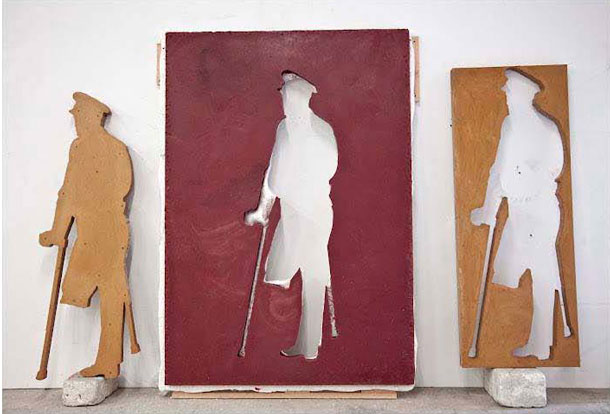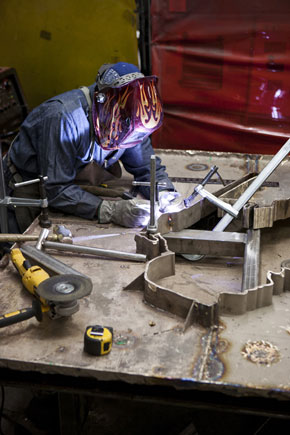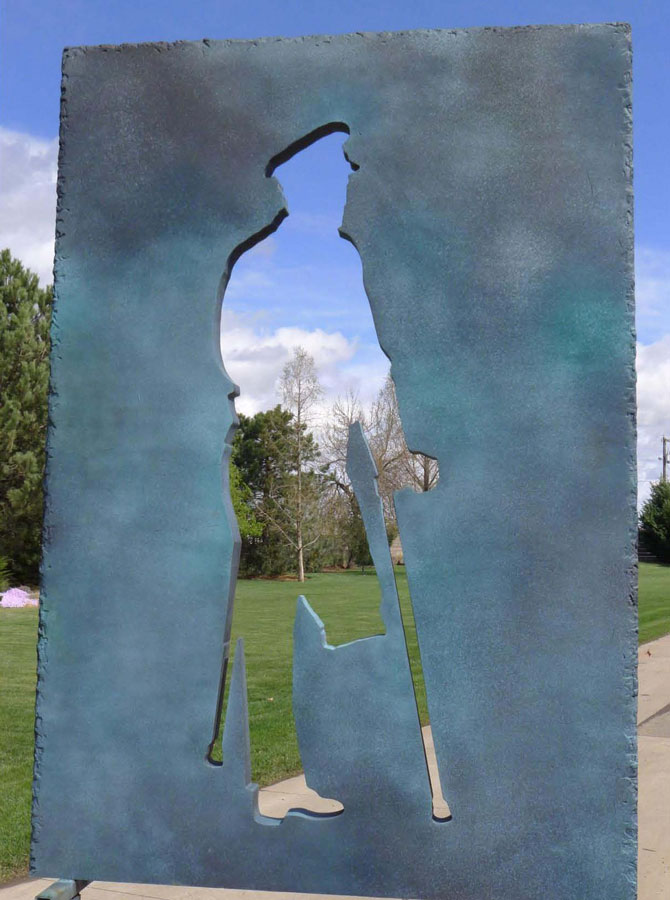From his Walla Walla foundry in southeastern Washington, sculptor Larry Kirkland worked with his team of artisans to give shape to the four large bronze silhouette sculptures at the heart of the Memorial’s meaningful tribute to our country’s servicemen.
Kirkland meticulously crafted these icons through lost-wax casting, a practice that has been used by artists for thousands of years. The process involved a number of steps, from model-making to mold-making, to a variety of techniques for applying the bronze, including pouring it into the wax or brushing it. Once all the wax molds were completed, Kirkland casted them in bronze, applied the patina coat, and sealed them for posterity.
The four sculptures compare and contrast the ideals – and realities – during the journey taken by all disabled veterans. Working together with images and text embedded in 48 glass panels, the silhouettes help interpret the challenges and feelings of the disabled veteran: call to duty and pride in service; trauma of injury; healing; and renewal of purpose.

Kirkland was well aware of this challenge at the Memorial. “It’s very exciting, but makes me nervous at the same time,” he said. “This Memorial is in Washington, D.C., right next to the Capitol. It’s got to be as good as it can be.”
To that end, Kirkland points out that the Memorial takes a different viewpoint than other, similar commemorative sites. “We feel, as a team, that our disabled veteran community is often hidden from daily life. We want to make sure their issues are illuminated. Our Memorial is not abstract; we have selected some specific content that differentiates us.”
This philosophy is central to all his work. Describing his artistic process, Kirkland says “the best of public art can challenge, delight, educate and illuminate. But above all, it can celebrate the qualities that make each place unique and can create a sense of civic ownership.”
One of the most prolific and sought-after sculptors working today, Kirkland has a special attachment to the Memorial. During his childhood, he moved with his military family throughout the U.S. and abroad.

Working together with images and text embedded in 48 glass panels, the silhouettes help interpret the challenges and feelings of the disabled veteran: call to duty and pride in service; trauma of injury; healing; and renewal of purpose.
